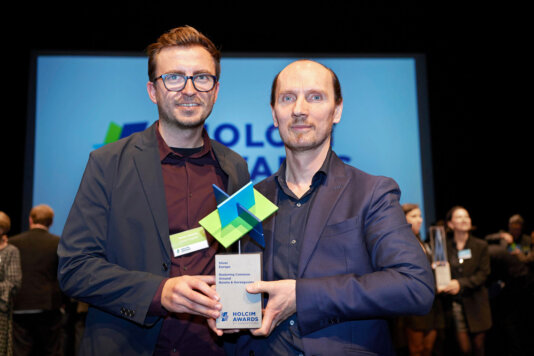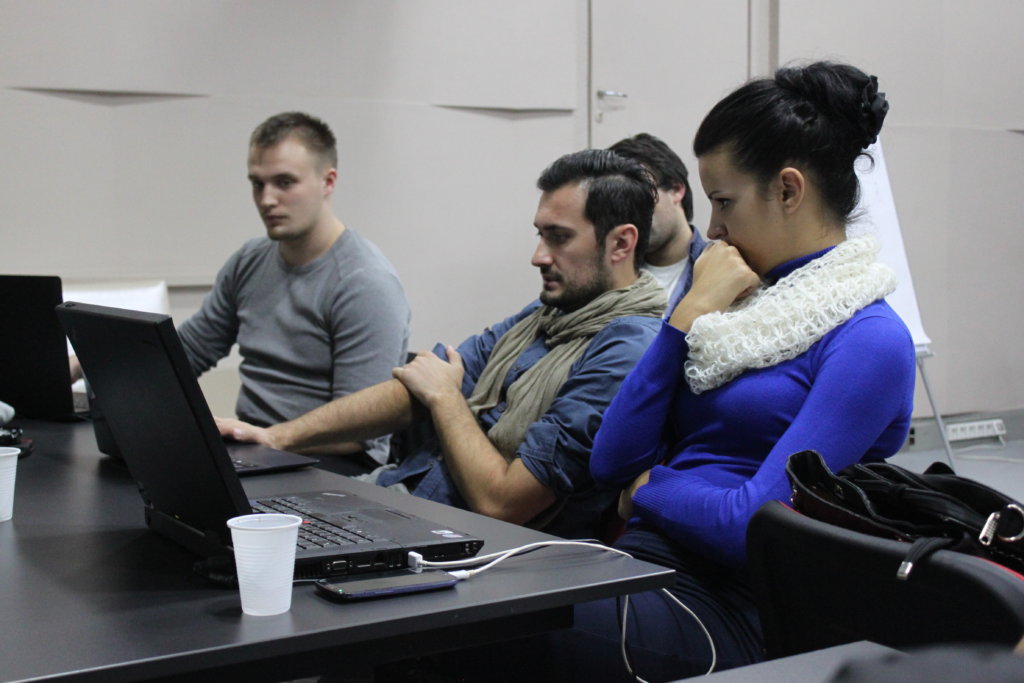- About
- Topics
- Picks
- Audio
- Story
- In-Depth
- Opinion
- News
- Donate
-
Signup for our newsletterOur Editors' Best Picks.Send
Read, Debate: Engage.
| January 19, 2022 | |
|---|---|
| tags: | #Bosnia and Herzegovina, #peace building, #activism, #racism, #youth empowerment |
| located: | Bosnia and Herzegovina, United Kingdom |
| by: | Katarina Panić |
Most Mira (Bridge of Peace) is a UK and Bosnia-based charity promoting reconciliation and peace-building in the Prijedor area of Republika Srpska, Bosnia-Herzegovina. One of the organisation's projects is aimed at restoring a structure destroyed during the bloody war of the 1990s and convert it into a youth centre that will hold cultural and reconciliation activities between the region's deeply divided communities of Croats (Catholics), Serbs (Orthodox), and Bosniaks (Muslims).
Titled Restoring Common Ground in Bosnia & Herzegovina, the project had won a silver prize for sustainable construction by the Holcim Foundation at Venice Biennale 2021.
Most Mira was founded and is run by peace activist Kemal Pervanić.
FairPlanet spoke to the founder of Most Mira - peace activist Kemal Pervanić (who is also a survivor of Omarska concentration camp) - about his plans for the youth centre and his views about the region's ongoing racial tensions and prospects for peace.
FairPlanet: Prior to receiving the award at Venice Biennale, you posted a photo of your 'lucky' shoes on your Facebook profile. Can you explain what it was about?
Kemal Pervanić: In 2020, together with Projekt v Arhitektura, we entered the competition. Later that year, we learned that out of the other 4,741 entries, our project won a prize, but we didn’t know which [prize]. I joked that if I wore my lucky shoes at the awards ceremony maybe we would win one of the top prizes. Amazingly, we won the silver award in Europe, the region with most entries.
Next year will mark the 30 year anniversary since your incarceration at Omarska and the 20 year anniversary of your first return to Prijedor. Also, 2022 will be, as is expected, the year when construction begins on the Centre. How would you describe yourself at these three points in time?
My incarceration in concentration camps in 1992 was the darkest chapter in my life. Traces of trauma that inflicted on me in the camps are still imbedded in my psyche.
Going back to Bosnia in 2002 retraumatised me, so I had vowed never to return. But I kept coming back, and since 2006, together with wonderful colleagues, I have been working on many local peace-building initiatives. One such project brought together young students of architecture and qualified architects whom we asked to work on creating the concept design for the Peace Centre.
Thirty years ago I became a victim of a political crime and I was lucky to survive. Since then, I have managed to turn my life around and become a human rights campaigner, activist and peace-builder.
Regarding societal divisions in Bosnia, how would you describe the developments over the last 20 years?
Until 2006, there was a big effort by the international community to build security. This was mainly done by building state institutions. Internationals also helped carry out much needed reforms to democratise society. If local politicians obstructed this progress - they were held to account.
But in 2006 the international community took a step back in the belief that Bosnian politicians would complete this process on their own. The majority of Bosnian citizens failed to use the space created after the war to press the politicians to complete those reforms, perhaps because of war-fatigue.
Today, we can see that the international players stepped back too early. If they had done more to help build a stronger civil society it could have more effectively countered the rise of political corruption and nepotism.
In 2006, there were no young people free from the burden of the past to demand the continuation of reforms which would make education, judiciary, economy, health and other key parts of society independent of party politics. This generational gap has allowed the politicians to start reconstructing narratives of blame, which prevail to this day.
The public space, which once offered a chance to all Bosnian citizens to promote democracy, has slowly been squeezed. Trust in state institutions has slowly eroded. The growing frustration has led many to leave the country. Today, in the absence of a more effective civil society, many people fear that armed violence may return.
After a long period of calm, this year we have witnessed a resurgence of incidents inspired by hatred and prejudice in the local community where the peace centre will be built. Some activists posit that the generations born after the war are more prone to polarisation because they have no personal experience and fear of war. Based on your involvement in the peace-building project, what is your stance on this issue?
Hatred and prejudice are not on the rise because young people have no experience of war. Even the Most Mira project, which promotes respect for human rights and helps build peace, was a target of vandalism three years ago.
These incidents happen because political leadership uses increasingly divisive rhetoric against the 'other'. This divide and conquer strategy works well because young people don’t get a chance to meet the 'other'. Bringing them together in a safe space and encouraging conversation between them can change their view and help them to identify with the 'other'.
How do you perceive the role of youths in promoting peace and how exactly is this centre looking to achieve that? Is there room to expand this model beyond the borders of Bosnia?
Most Mira takes a view that young people must be an integral part of designing and especially implementing peacebuilding processes.
In our work young people are at the core of every programme, even if they initially lack the necessary experience. We allow them to innovate; if we don’t let them fall, they will never learn to walk.
The Most Mira Peace Centre project is a good example of this approach. We learn what works and will ultimately be able to transfer that knowledge and replicate it elsewhere.
"If we don’t let them fall, they will never learn to walk."
What do you think is it about the Centre that caught the attention of the Holcim Foundation jury?
The jury praised the ethical premises at the core of the project, which highlighted a participatory design process conducted over many years with the local communities.
They also felt that our goal of bridging ethnic diversities in favour of a respectful coexistence has a high social value.
Are there any social or financial factors constraining the continuation of the project?
Our original plan was to build in 2019. Since then, we have faced issues which sent us back to the drawing board. We are now very close to obtaining the building permit and hope to start building in 2022, but our 2016 budget didn’t provide for a subsequent increase in building footprint.
Last year, we also learned that prices of labour and building materials doubled since 2016. We are now in the process of raising additional funds and generating the additional support in obtaining these funds in order to complete the project.
Image by Kemal Pervanić


By copying the embed code below, you agree to adhere to our republishing guidelines.

